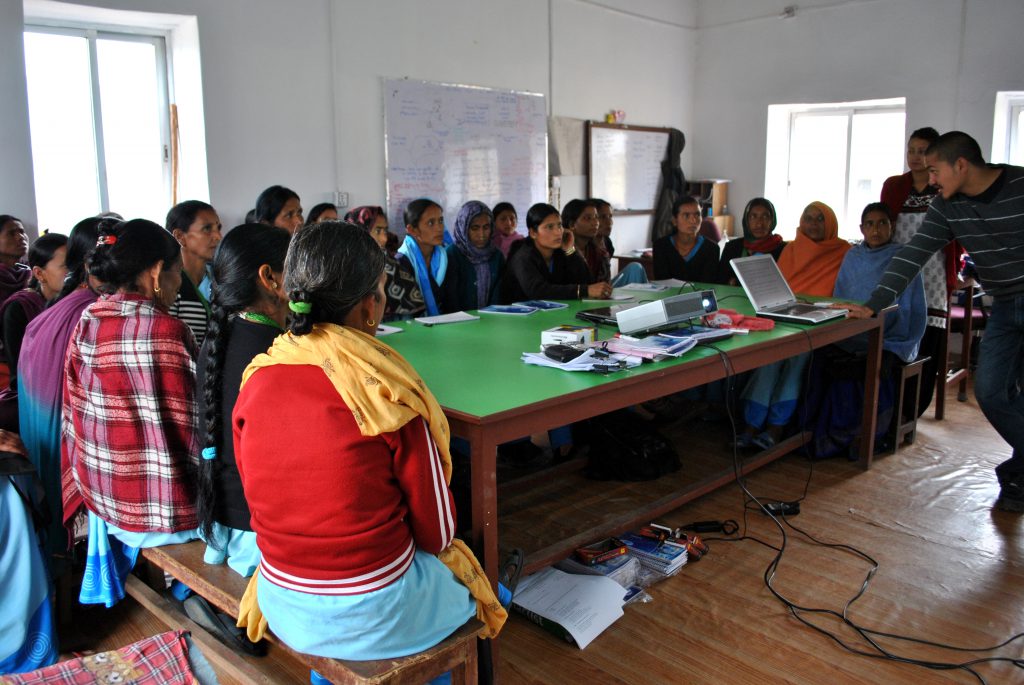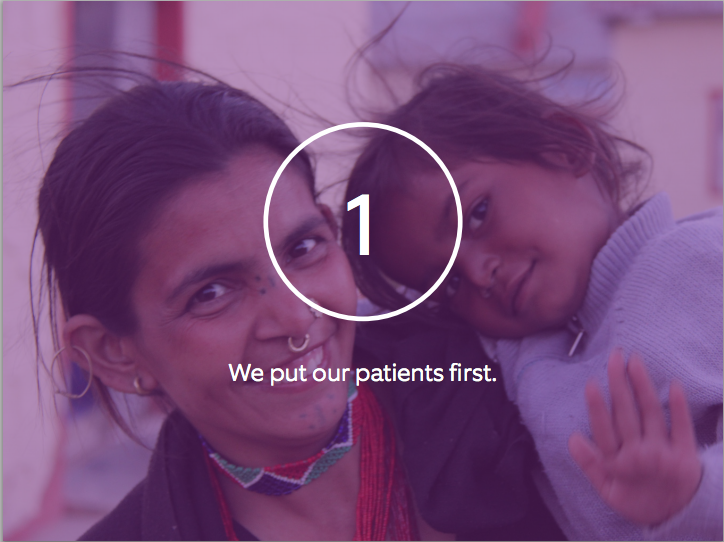A Look Inside Our For-Impact Culture Code
September 11, 2014 - Monica Landy
“We want to build the best global health organization in the world. To do that, we need a culture where remarkable people produce remarkable results. “
Those are some of the first lines of our For-Impact Culture Code, a defining document that’s received considerable attention. In it, we outline the ten principles that drive our culture, the first one being, “We put our patients first.”
But what does this for-impact culture actually look like day-to-day?
Here are a few examples of how our team makes a for-impact culture possible across continents:
We Treat Efficiency as a Moral Must
When your outcome is impact, time is a terrible thing to waste. We place a huge emphasis on adopting new technologies and mastering workflows so we can focus on what matters most for our patients, like building a phenomenal leadership team or securing funding opportunities to expand our healthcare services.
One of our favorite systems is the project management tool Asana, which allows us to map out projects, manage our to-do’s, and communicate in an easy and efficient way. The seamless nature of teamwork through Asana is especially important since our team spans two continents and several time zones.
For instance, our Director of Impact has an Impact Dashboard where staff record the latest numbers related to our Key Performance Indicators (KPIs). This is also where our Development team finds data required for grant applications and where the Marketing team discovers our next impact story.
Another way we try to always push for efficiency is through meetings—or rather, a lack thereof. During onboarding, we introduce key principles that streamline our meeting process. If meetings aren’t utilized properly, they come at a tremendous time cost to the organization—so it’s everyone’s responsibility to treat each meeting as a race to clarity. We’ve built a template in Asana so meetings are clearly structured and prep work is assigned well in advance.
The best part? On Wednesdays we don’t allow meetings at all.
We Think Big
We balance thinking big with focused execution. At 9am every day, our New York office huddles for our morning standing meeting, and team members from Boston, Seattle, and even Nepal dial in via UberConference to join. We kick off every day by sharing our “Daily Commitments,” ranging from “Compile draft data and content for HIV report summarizing program to date,” to “Finalize assets for promoting our new Venmo partnership.” These are our daily promises to the team that are big enough to matter, but small enough to achieve.
We Build Simple
We’re always saying “Asana or bust.” If we can build a project in Asana to do something efficiently, we do that instead of adding separate tools to our workflow. We’ve built meeting templates, onboarding templates, CRM’s for funding partners, and checklists for managing the referral care for our crowdfunding patients. For other key tasks we use Dropbox, BambooHR, Small Improvements, and Salesforce—systems that streamline our processes and facilitate our ability to work better.
As a general rule, we prefer to work creatively with what we have, instead of overburdening our team and overflowing our systems with too much complexity.
We Are Transparent Until it Hurts
We believe it’s crucial to be transparent about impact data, finances, and failures, so we publish both Quarterly and Annual Reports. We also build transparency in our internal systems, such as organizational priorities, milestones, and strategies. Transparency helps create open and honest relationships with our partners, community, and within the team. But most importantly, it lets us continue to produce remarkable results for our patients, by constantly forcing us to reflect on what’s working and what’s not.
We Balance Professional Intensity with Personal Support
All of our leaders strive to be both professionally uncompromising and personally supportive. Solving one of the world’s most challenging problems requires intense commitment, so when push comes to shove, we are intense. But we’ve also built a number of systems to ensure we’re offering each other the support we need.
We have a robust system of management articulated in The Role of Management, which includes weekly one-on-one management meetings where team members can ensure they’re getting all the clarity, feedback, and support they need. We also make a conscious effort to connect each other to world-class mentors. And every other week, we host a “Lunch & Lifehack” where team members present interesting tools or practices that have helped them in their personal or professional lives (like taking caffeine naps or filling their corner of the office with houseplants).
We Solve for the Patient
This brings us back to Rule # 1: Solve for the patient. The rest of the Culture Code, like everything else we do at Possible, is meant to drive us towards fulfilling our ultimate mission. By working efficiently and intensely, but also supportively, we strive to convert each day into remarkable results for our patients.







